This season has seen somewhat of an explosion in young English talent in the Premier League. A number of clubs have either bought or promoted young, relatively untested, English players, and a number of them have put in some promising displays throughout the season to raise hopes for the future of the England national team as well. This resurgence of sorts has taken place across the pitch, and up front is no exception. England used to be blessed with a plethora of striking options back in the ‘90s, so much so that the likes of Matt Le Tissier, Andy Cole and Les Ferdinand have far fewer caps for the Three Lions than they would have perhaps ordinarily achieved, due to the sheer number of quality English strikers during this time. While the national team are nowhere near as blessed at the moment, with Harry Kane almost undisputed as the first-choice, there are a few strikers emerging as credible backup options for the Spurs man. Callum Wilson’s time seems to have gone; the Bournemouth striker has had a wretched season so far, and looks unlikely to add to his four caps. Danny Ings has had a superb campaign this time around, but will need to show more consistency, especially with the Euros now having been pushed to next year, to get into the squad for that tournament. However, there are two young strikers who have emerged this season as contenders for a place in the England squad for years to come – Tammy Abraham and Dominic Calvert-Lewin.
Abraham was given his chance to lead the line at Chelsea by Frank Lampard, partly due to the club’s transfer ban, but it was a chance he has grabbed with both hands, having scored 13 goals in the league so far this season. It is a similar story for Calvert-Lewin, who has benefited especially since the arrival of Carlo Ancelotti as manager at Goodison Park, and he, too, has 13 goals in the league this season. This tactical analysis piece will attempt to compare these two young strikers, and through our analysis, this scout report will try and determine who is the better striker of these two incredibly talented youngsters.
Statistics
Before getting into the tactical and video analysis side of things, we will compare these two strikers statistically over the 2019/20 season. All statistics have been taken from Wyscout unless otherwise noted.
What strikes you when you do look at the numbers is how similar they are for these two strikers. As mentioned previously, both of them have scored 13 goals in the league, and 15 in all competitions. When compared on a ‘per 90 minutes’ basis, it is Calvert-Lewin who is marginally ahead, with 0.54 goals/90 as compared to Abraham’s 0.52. However, Abraham does have three assists as well, while Calvert-Lewin has just one. Thus, when we look at overall goal involvement (goals + assists), it is the Chelsea man who is ahead with 0.62 goal involvements per 90, while Calvert-Lewin manages 0.59. Once again, the difference is marginal, and this will be a theme that will be continued throughout the statistical comparison. Another important metric for strikers is their conversion ratio, and here too, these two players are neck-and-neck, with Abraham boasting a 20% conversion ratio to Calvert-Lewin’s 21%. This is extremely favourable when compared to the rest of the league, with Harry Kane on 20.4% and Marcus Rashford on 20%, and only Pierre-Emerick Aubameyang and Sergio Aguero well ahead on 27% and 24.6% respectively, showing that these two strikers have been reliable finishers this season, compared to the best English strikers.
There is one metric where there is a little more of a gap between these two, and that is in expected goals (xG). Calvert-Lewin has performed in line with his xG total of 15.29, but Abraham has underperformed, with an xG total of 18.9 against 15 goals scored. A related statistic, taken from the Premier League website, shows that Abraham has missed 17 big chances this season, the third-highest of any player in the league this season. However, his Everton counterpart has also missed 14 such chances, thus once again showing that there is very little to pick between these two statistically, even when looking at the weaker side of their game.
Somewhat surprisingly, Calvert-Lewin has won more offensive duels, with a 29.1% win rate as compared to Abraham’s 25.7%. Abraham has been used as more of a traditional number nine at Chelsea this season, and one would have expected him to perhaps do better than Calvert-Lewin on this metric, who has played as part of a front two for Everton. Abraham does get into more duels, as is shown by the fact that he is involved in 9.3 offensive duels per 90, while Calvert-Lewin has 7.4 such duels per 90 minutes, illustrating the different roles that these two play for their clubs.
With the statistical analysis out of the way, let us now look at the footage to see how both these players have played this season, and what their strengths and weaknesses are.
Tammy Abraham
Let’s start with the Chelsea striker. Abraham was made Chelsea’s leading man up front on the back of an excellent season with Aston Villa in the Championship, where he scored 26 goals to fire them to promotion to the Premier League this season. His heat map for this season shows just how Frank Lampard has used him –
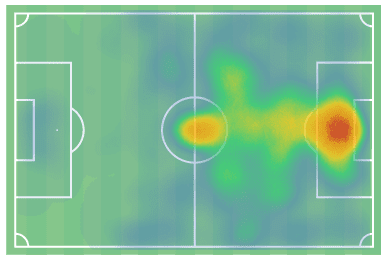
Abraham has mostly been played as a lone striker, tasked with holding up the ball and linking up with his wingers and attacking midfielders. The heat map shows that he has usually stayed central and looked to get into the penalty box when Chelsea build up, not roaming the channels or getting out wide.
He has played a vital role when the Blues are in the attacking transition phase, having won the ball back, especially when the turnover happens deep in Chelsea’s half. Often, the Chelsea player in possession will look to play a long pass towards Abraham, who drops deep to control the ball and hold off the opposition defender before laying the ball off to a teammate charging through on the counter-attack.
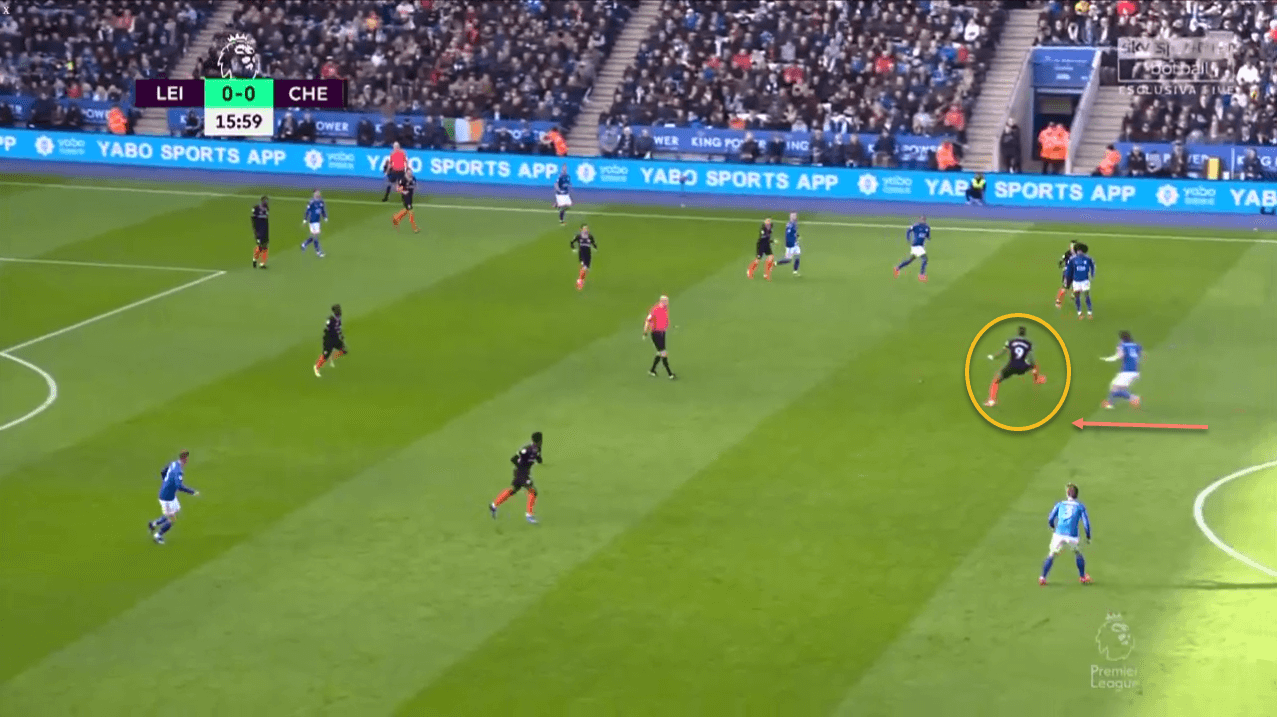
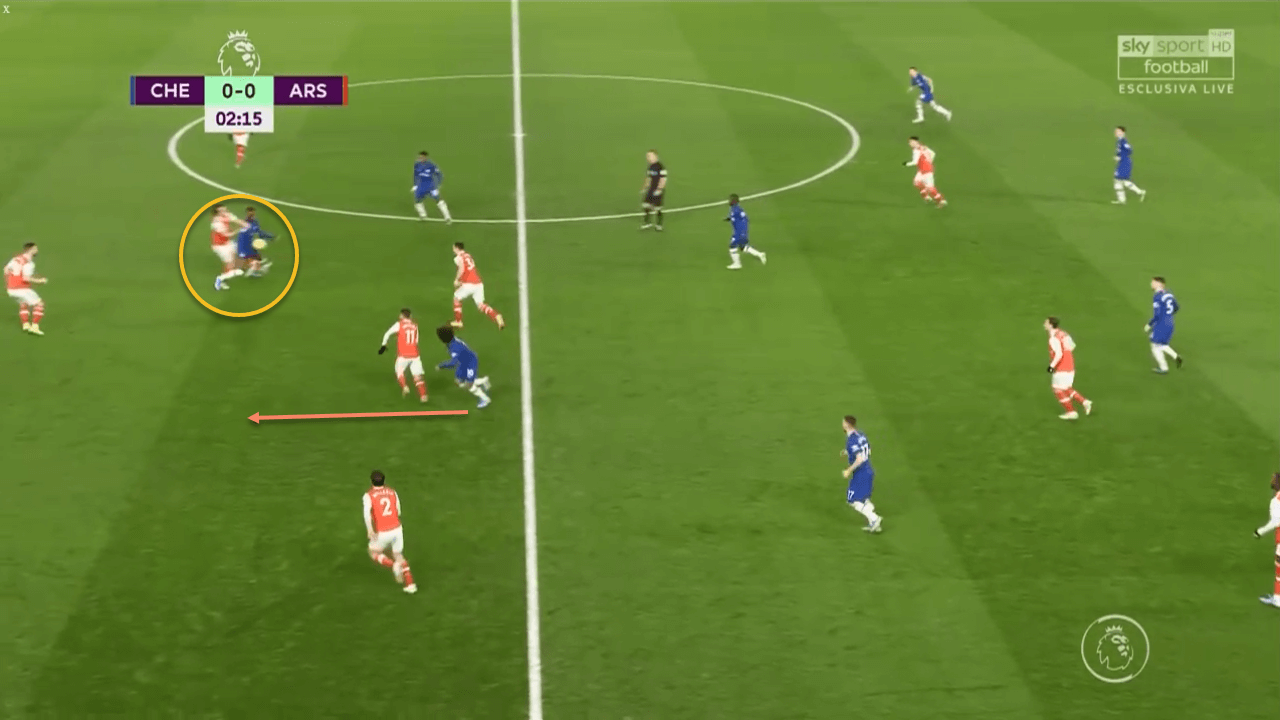
During Chelsea’s build-up, Abraham usually drops into deeper positions to try and combine with his teammates, thus either drawing out the opposition centre-back and creating space in behind, or having the time and space on the ball himself –
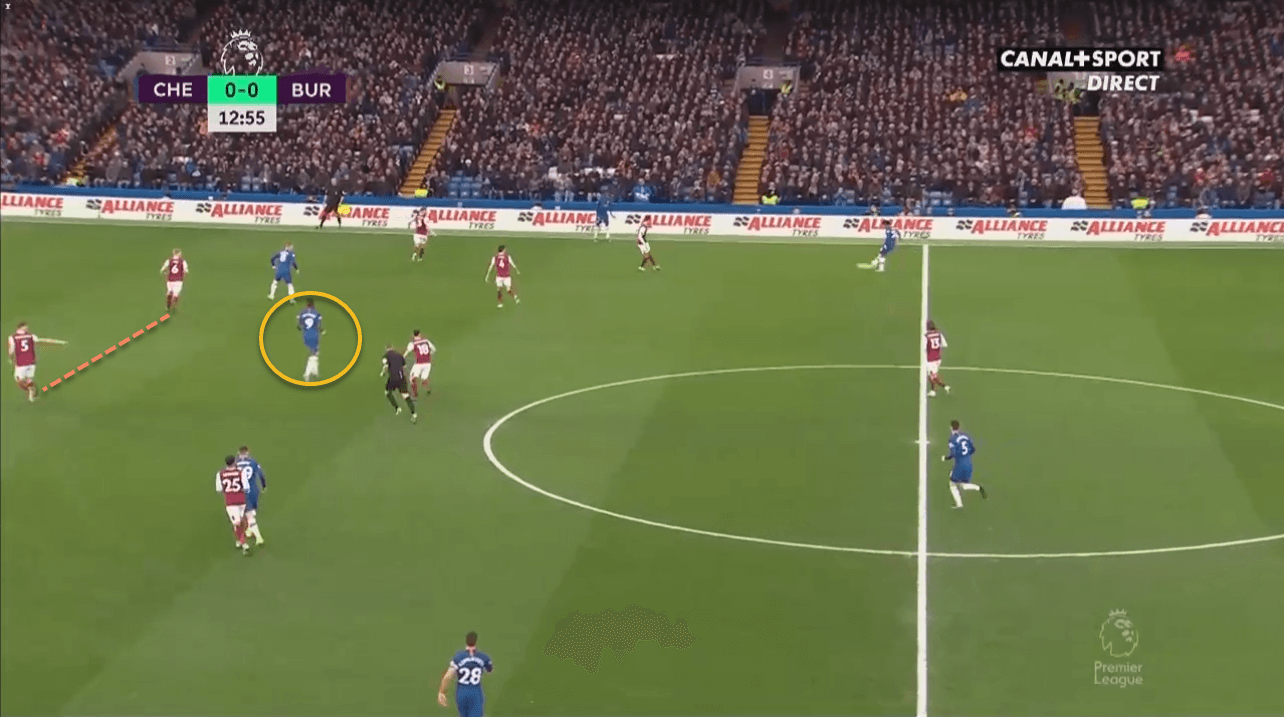
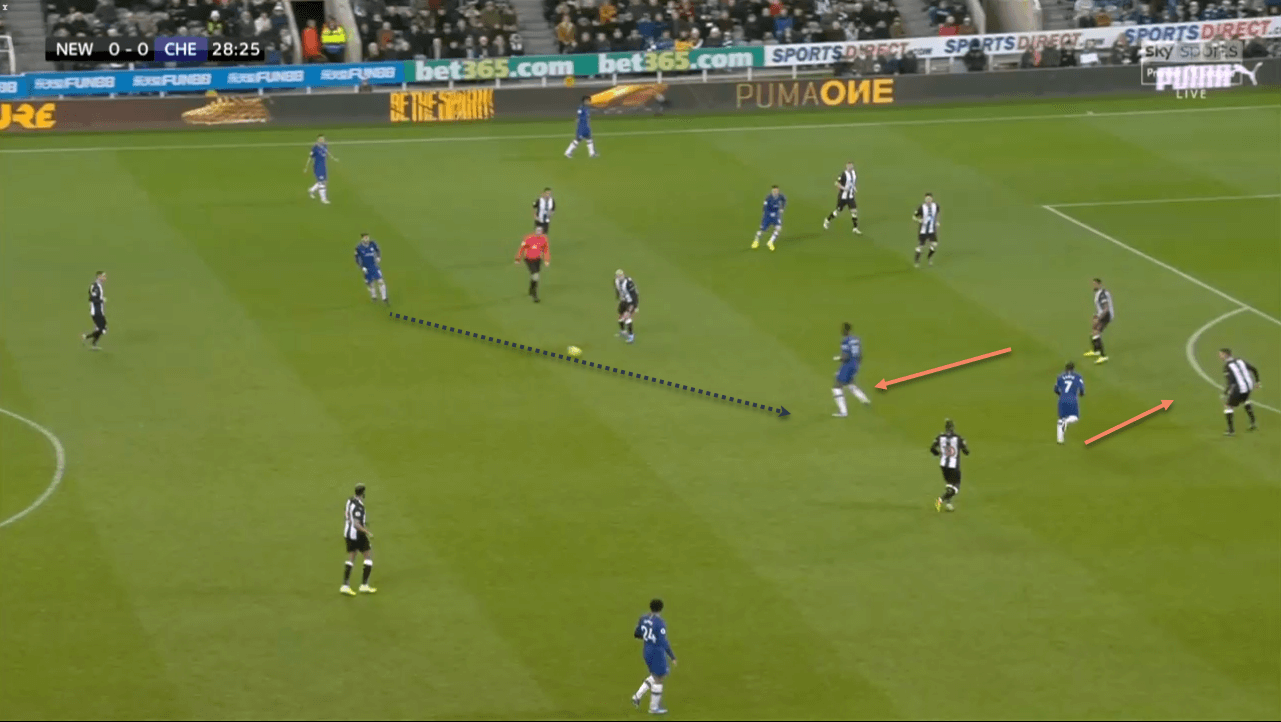
He only looks to get into the box when the ball is wide and there is a potential cross coming in. At 6’3”, Abraham is quite tall and is thus good in the air, and he also complements these physical gifts with a very good understanding of where to be in the box –
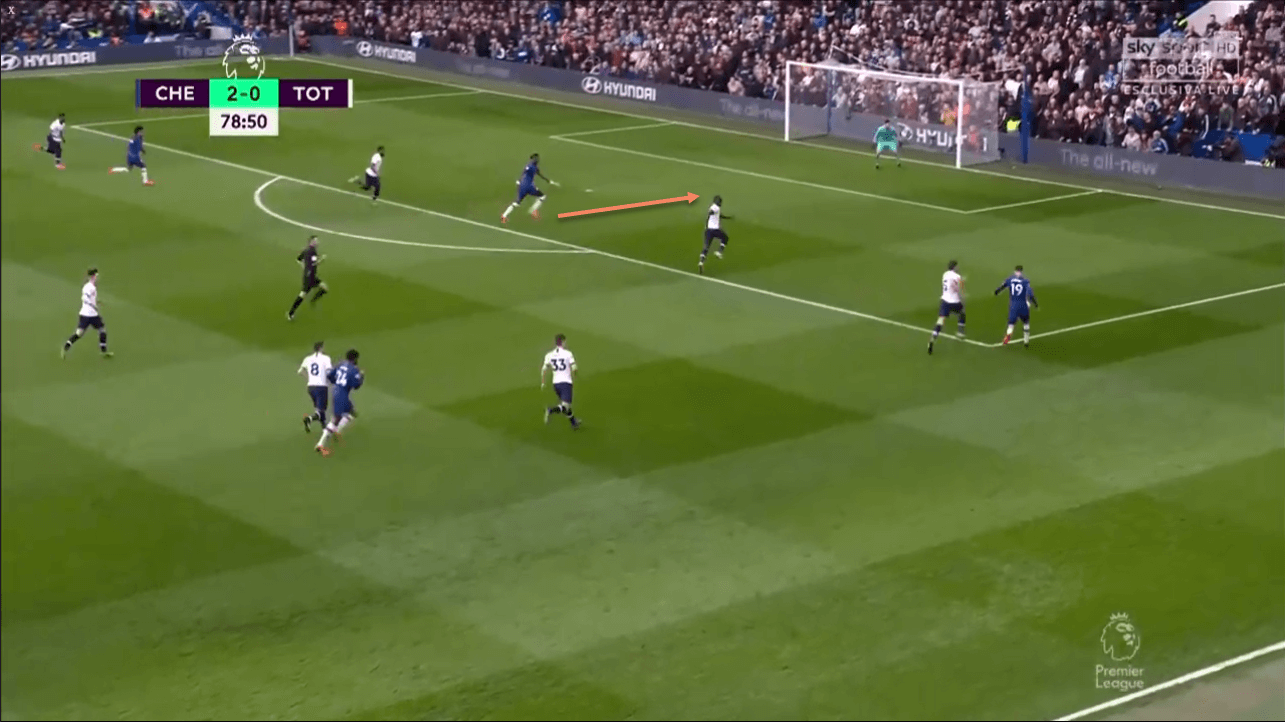
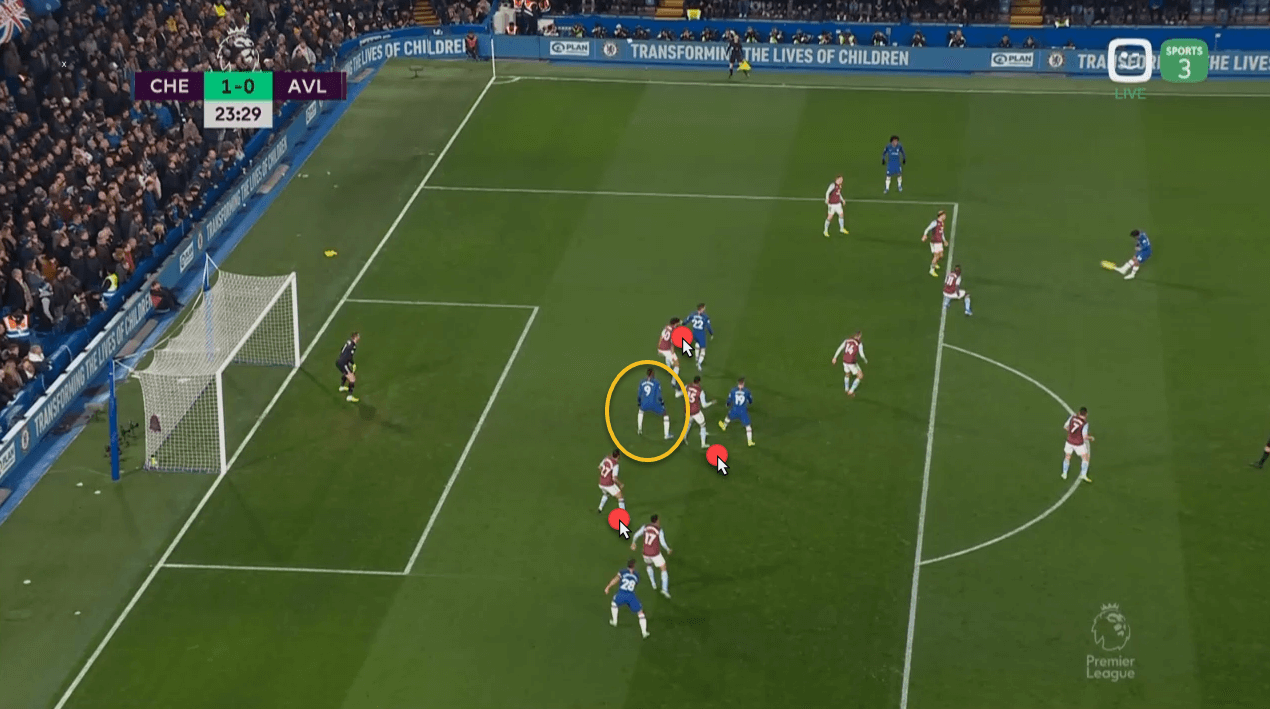
As touched upon earlier, Abraham positional instincts are excellent, and he regularly manages to find space away from the opposition defenders in the box to get on the end of crosses and passes –
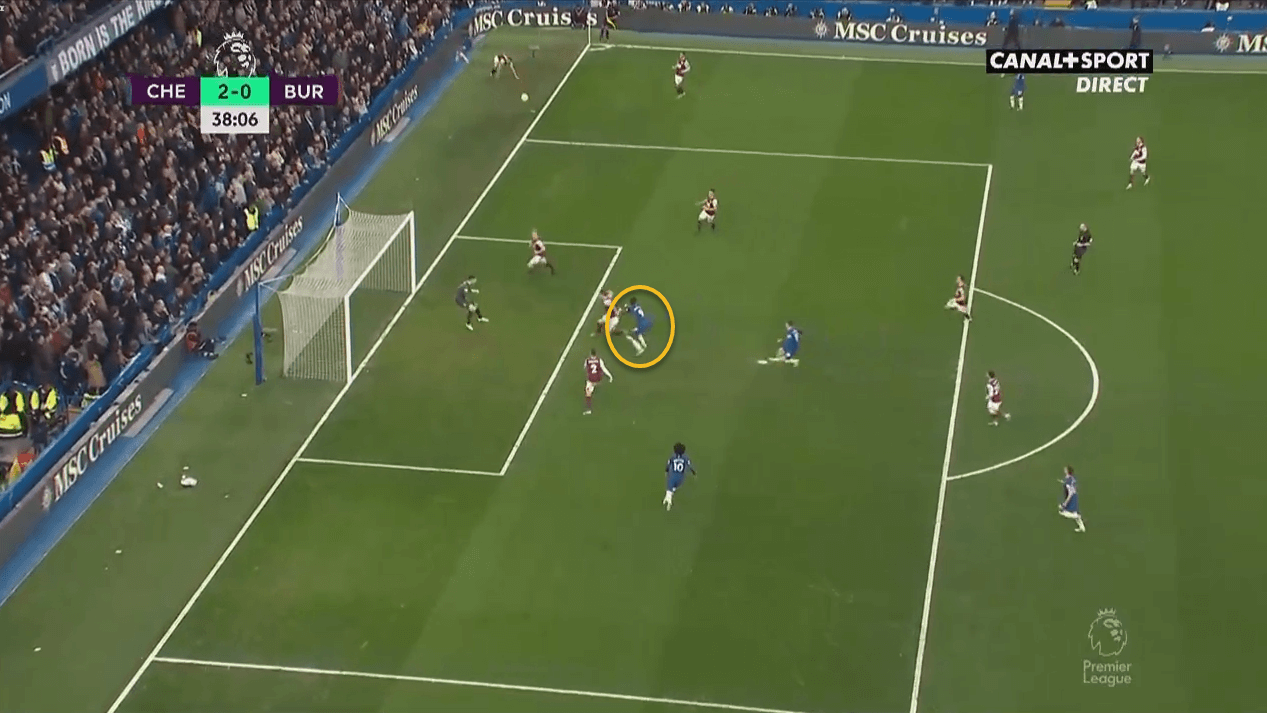
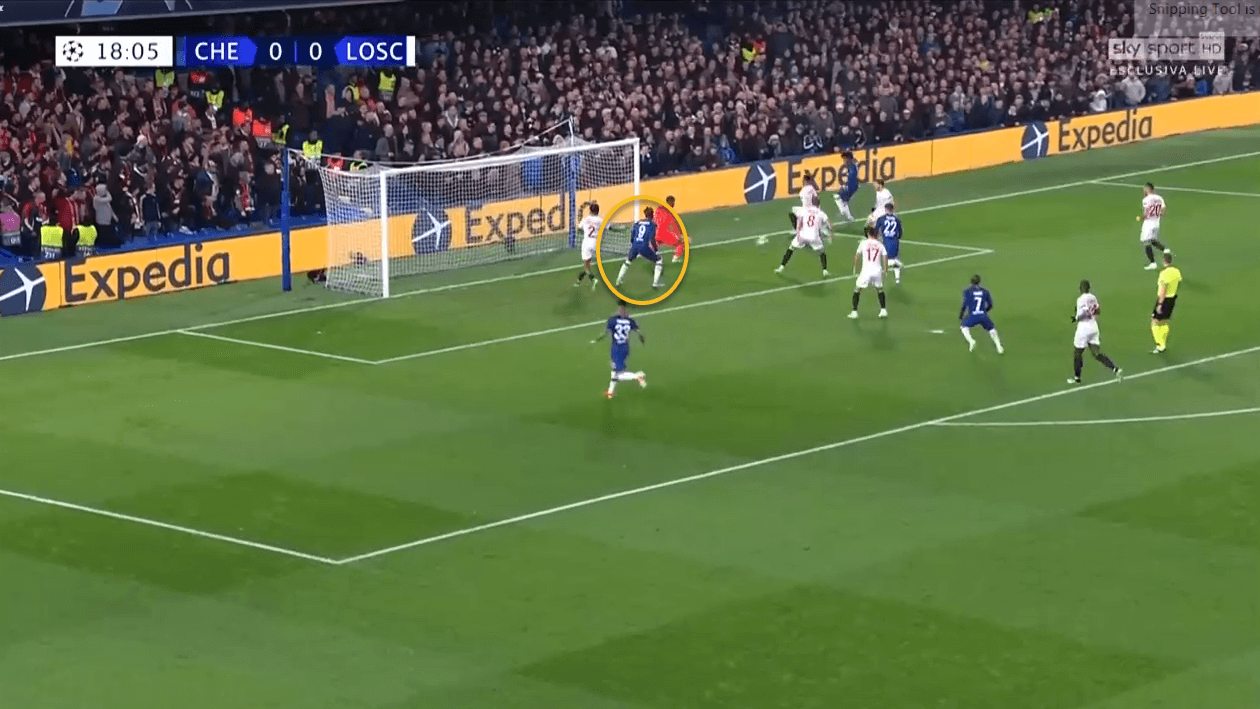
While he is not the fastest player, and his preferred style of play is one where he is more involved with the build-up play, he is not averse to making a run in behind the defence when the opportunity presents itself –
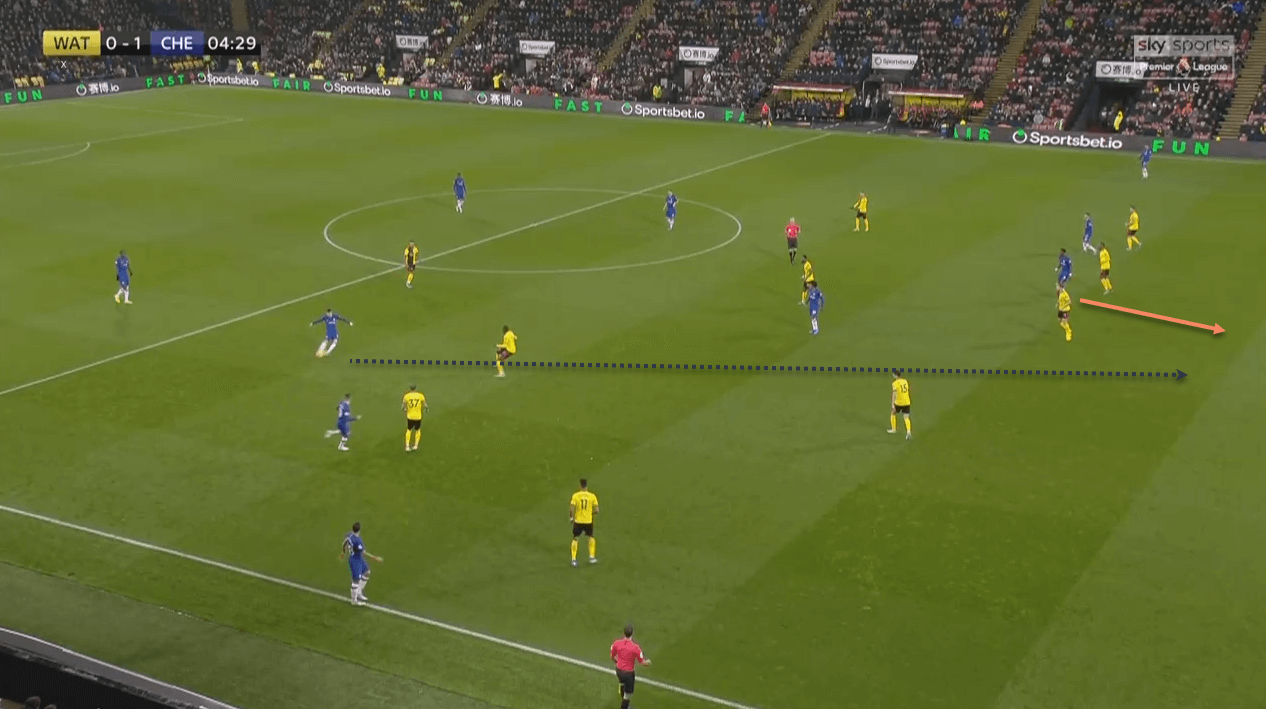
As the numbers have shown, Abraham is a capable finisher, but he does have a tendency to miss chances as well. Nevertheless, as this analysis has shown, the Chelsea striker works well in systems with a lone striker, as he has the physical attributes to be a target man, while also having the necessary intelligence and awareness to know when to drop and create space for his teammates. His instincts and finishing ability make him a deadly prospect from within the penalty area, and while he could improve his conversion ratio, Abraham has operated at an elite level this season, and is a good pick for any team which plays with width and a sole striker.
Dominic Calvert-Lewin
This season has been the breakout campaign for the 23-year-old, certainly in terms of goals scored. He did make 38 and 44 appearances for the Toffees in the last two seasons, but only scored eight goals in each of those campaigns, a tally he has almost doubled in only 32 appearances so far this season. As a caveat, Calvert-Lewin was often fielded out of position early on in his career, even featuring at right wing-back in the 2017/18 season as Romelu Lukaku was the main man up front. This season, as mentioned earlier, he has been fielded as part of a front two with Richarlison, and his heat map is quite instructive –
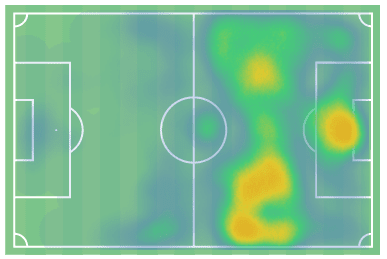
As you can see, the Everton striker has been quite involved on the right flank, which is a result of his role in Everton’s 4-4-2, where the two forwards split and run the channels quite regularly. However, as the stats showed, there are quite a few similarities between Abraham and Calvert-Lewin.
The first of these is Calvert-Lewin’s ability to hold up the ball and bring teammates into play. Everton’s 4-4-2 system under interim manager Duncan Ferguson, and then Ancelotti, has not had a fixed target man. Calvert-Lewin and Richarlison take turns to drop deep and hold up the ball while the other sprints forward into the channel. However, whenever Calvert-Lewin has had the opportunity to drop and hold off a defender, he has generally done well. Standing tall at 6’2”, he too is physically able to perform this role –
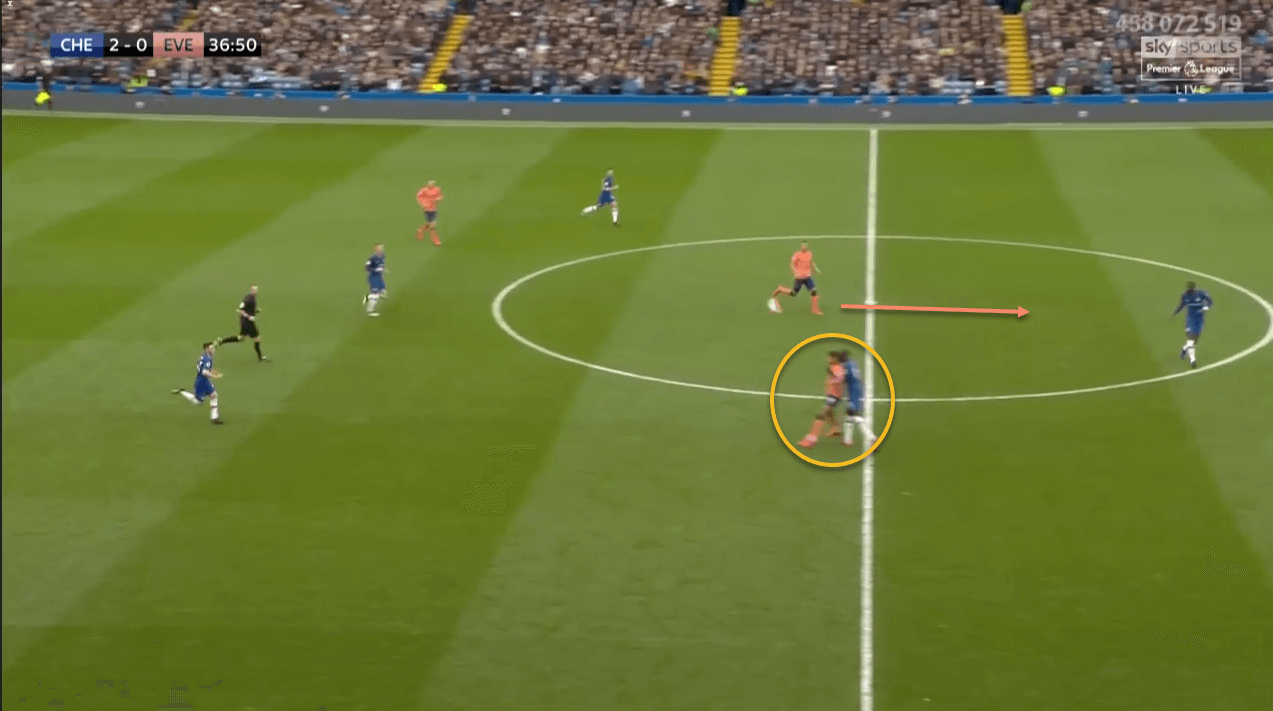
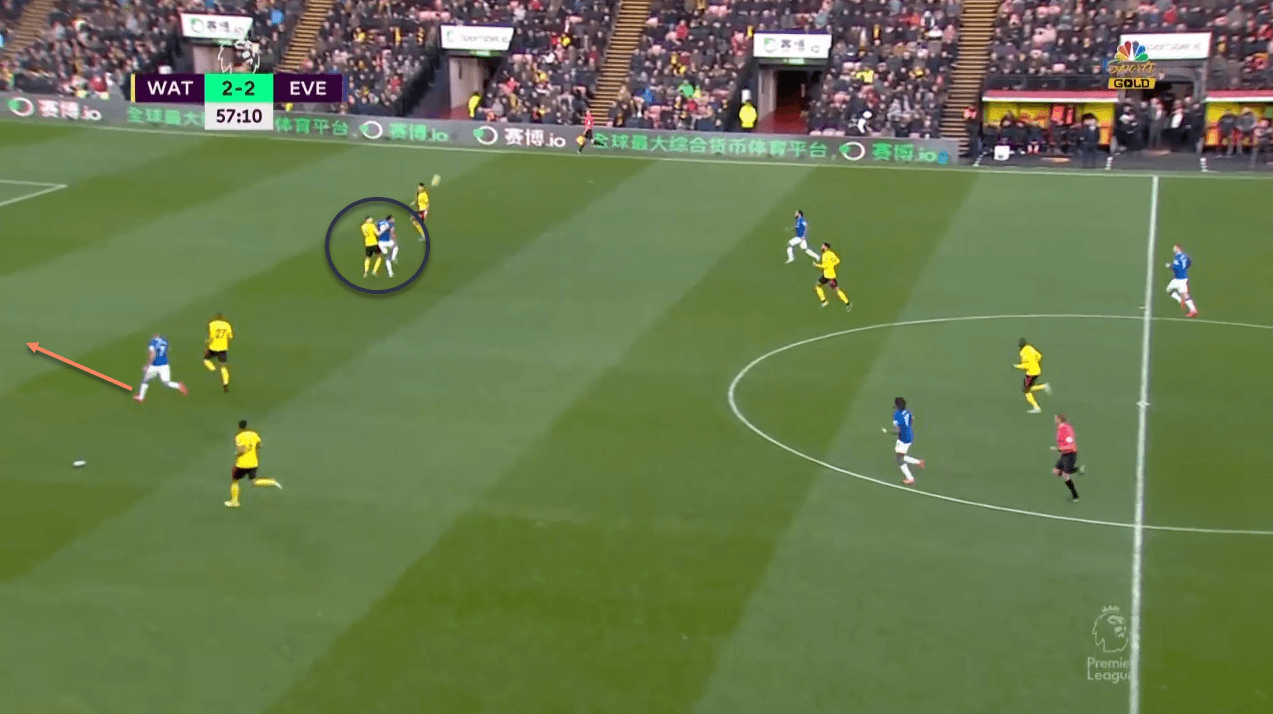
The second similarity with Abraham is in his ability to find space away from opposition defenders in the box, and make well-timed runs to get on the end of crosses. Calvert-Lewin is intelligent with his movement, being able to drag defenders out of position to create space for his teammates, or take advantage of it himself –
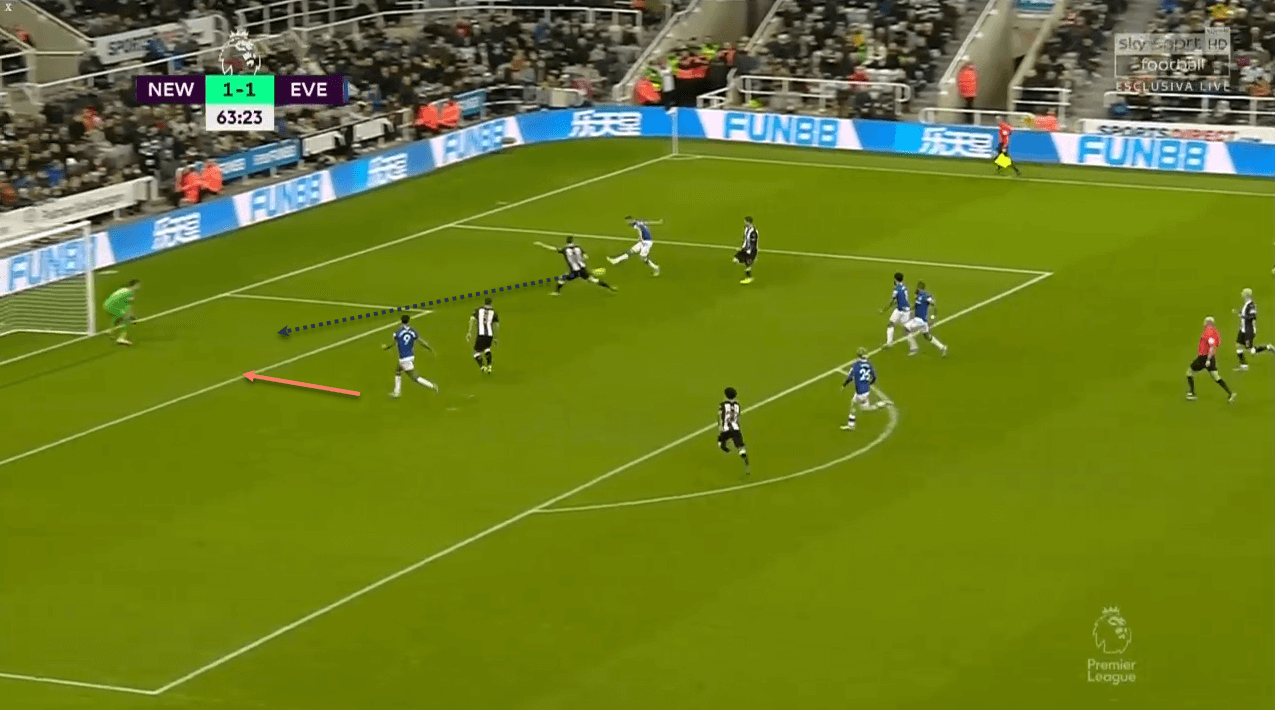
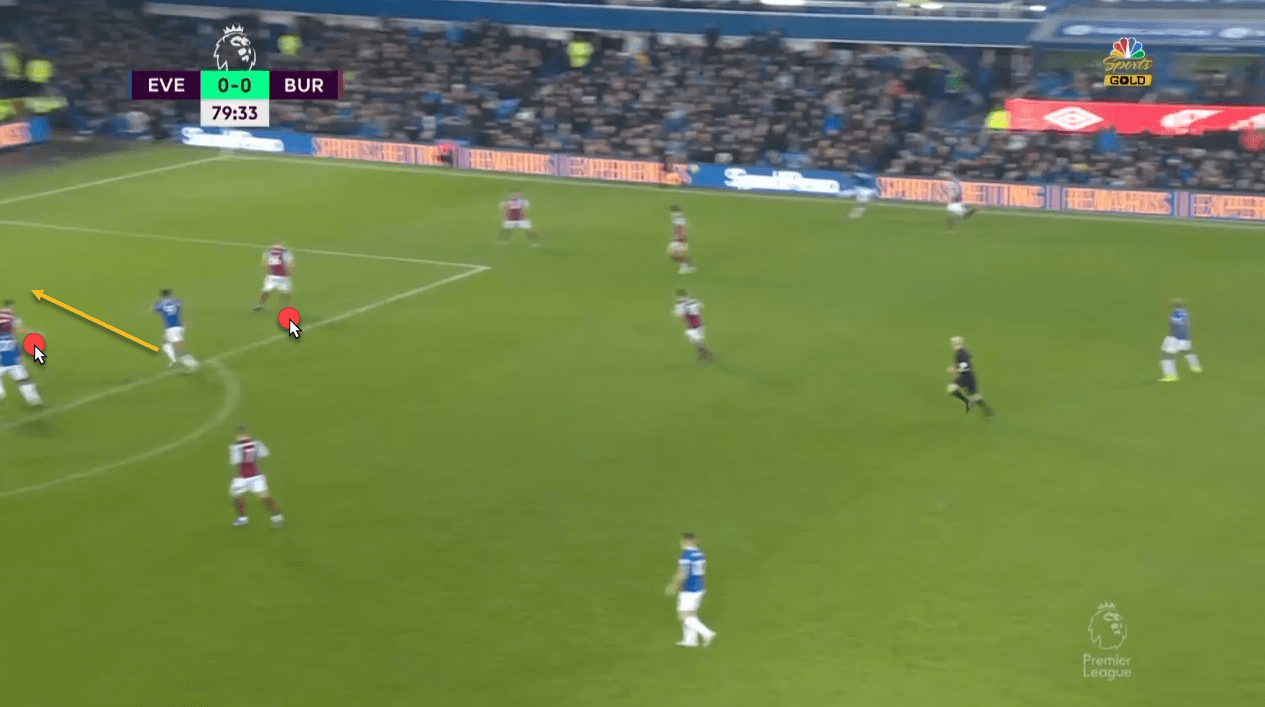
One of the major differences between the two is the type of run they make. Of course, this may be due to the difference in tactics and systems between Chelsea and Everton, but anybody who has seen both teams, and both these strikers, play, will agree that Calvert-Lewin is faster and more agile than Abraham, and thus, usually, makes runs into the channels as well as in behind the opposition’s defensive line. While, as noted above, he does have the physical attributes to play with his back to goal, and has done so at times for Everton, he is at his best when running onto his teammates’ passes, and specifically in the channel or half-space between the opposition centre-back and full-back –
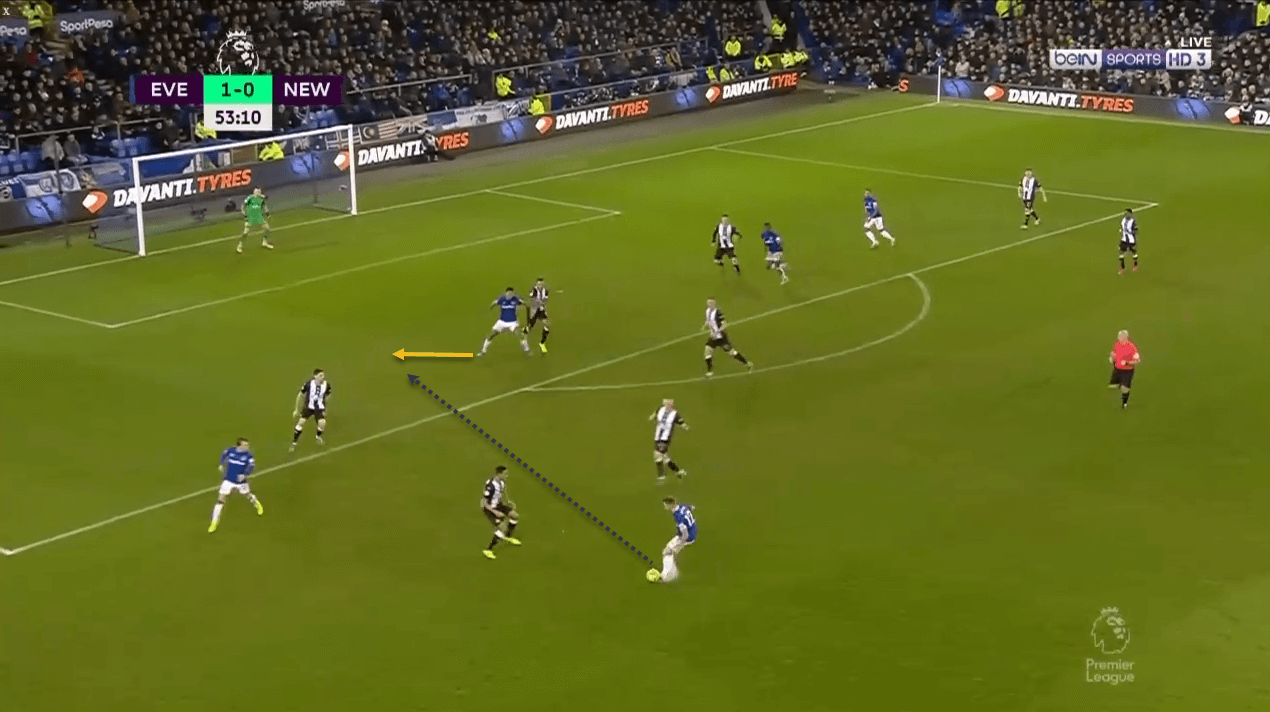
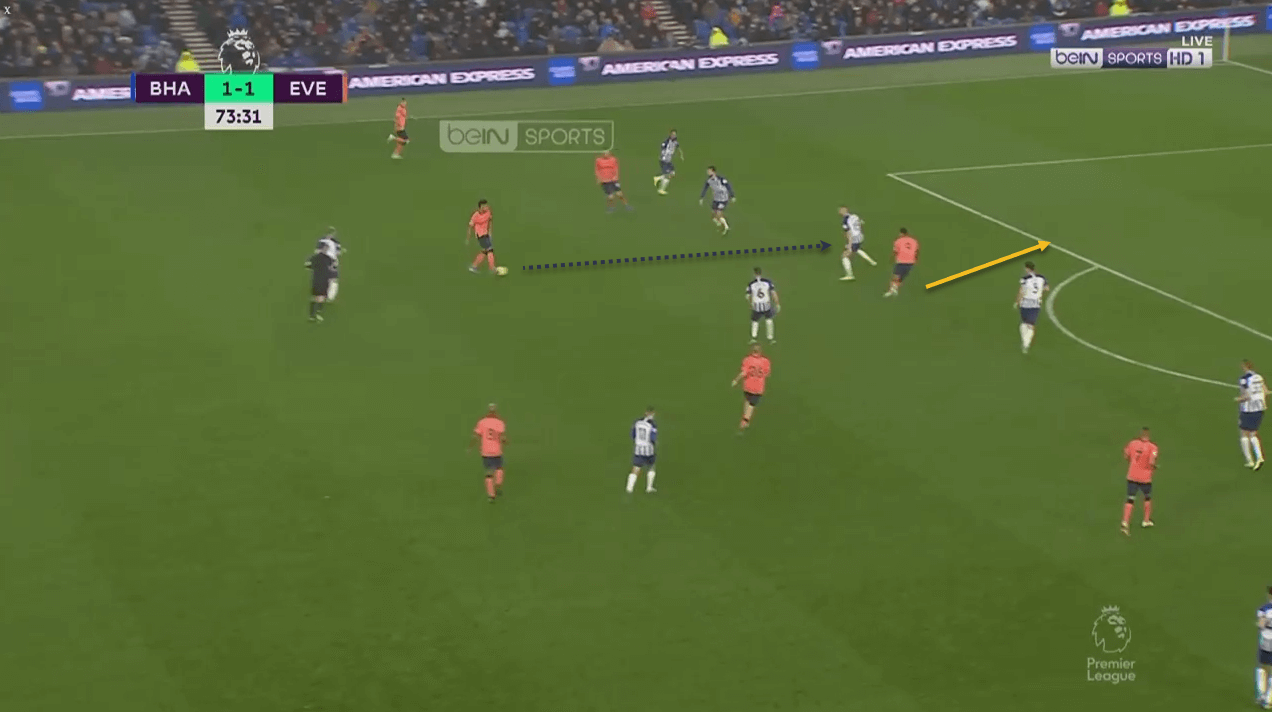
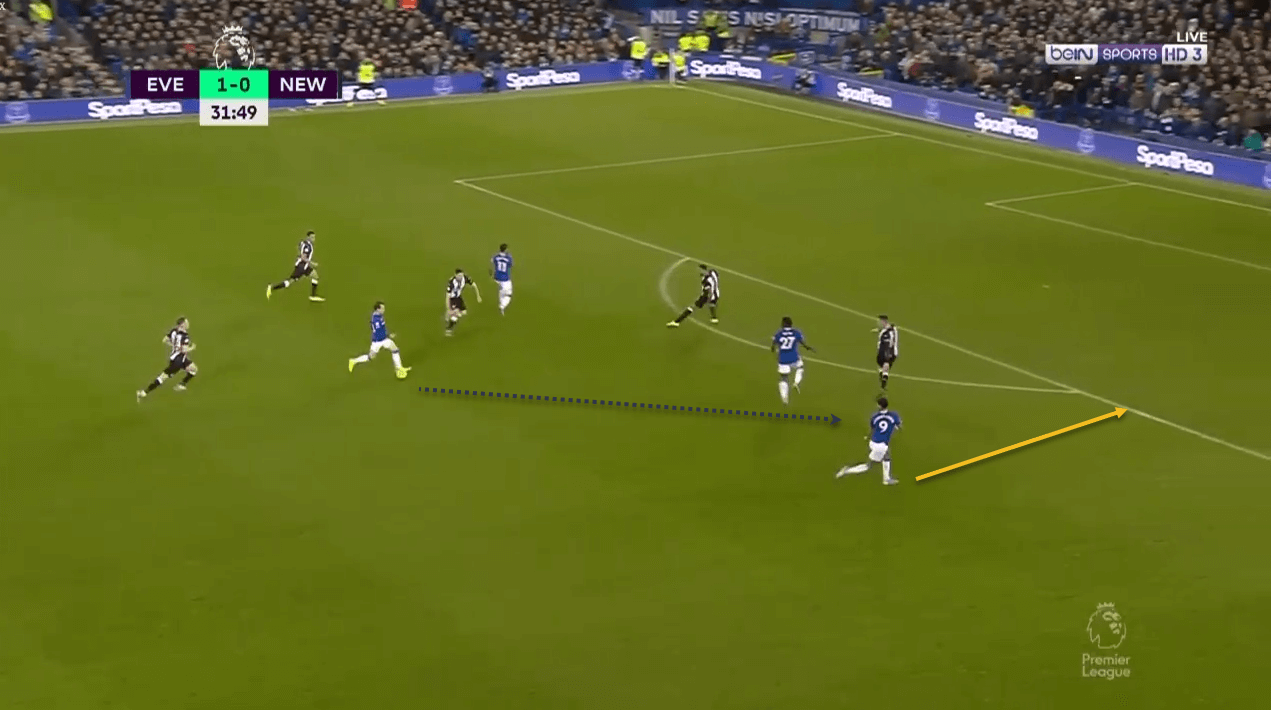
Calvert-Lewin, too, has been guilty of missing chances this season. But, as with Abraham, this is his first season leading the line for a Premier League club, and as his conversion numbers have shown, he has put enough chances away this campaign to be considered a good finisher. With some work on the training ground to improve his finishing and movement, there is no reason why he cannot become an elite striker in the Premier League.
Conclusion
So, what can we conclude from this analysis? The statistics show very little to choose between these two young English strikers, but it is upon watching them play that we see that they are very different stylistically. Abraham is a more traditional centre-forward, playing with his back to goal and dropping into space to combine with his teammates, while Calvert-Lewin prefers using his speed to run in behind the defensive line and into the channels. Both strikers are well-suited to the systems that their clubs use, and there is genuinely not too much to say that one is better than the other. If we were to use the current England national side as a goal, we could say that Abraham is a better fit for them at the moment for his stylistic similarity to the way Harry Kane plays for England. However, there is nothing to say that Calvert-Lewin cannot play that role if asked to; it is just that he is better at playing a more direct role, running at the defence, perhaps similar to how Marcus Rashford plays when used as a centre-forward. This may be a clue to how Calvert-Lewin could be used by England – as a wide attacker who dribbles into and attacks the box from wider areas.
Nevertheless, both strikers are excellent young prospects and look set to have long goalscoring careers if they can keep improving. England are certainly the better for it, with two able deputies for Kane and Rashford available to them for next year’s European Championships.

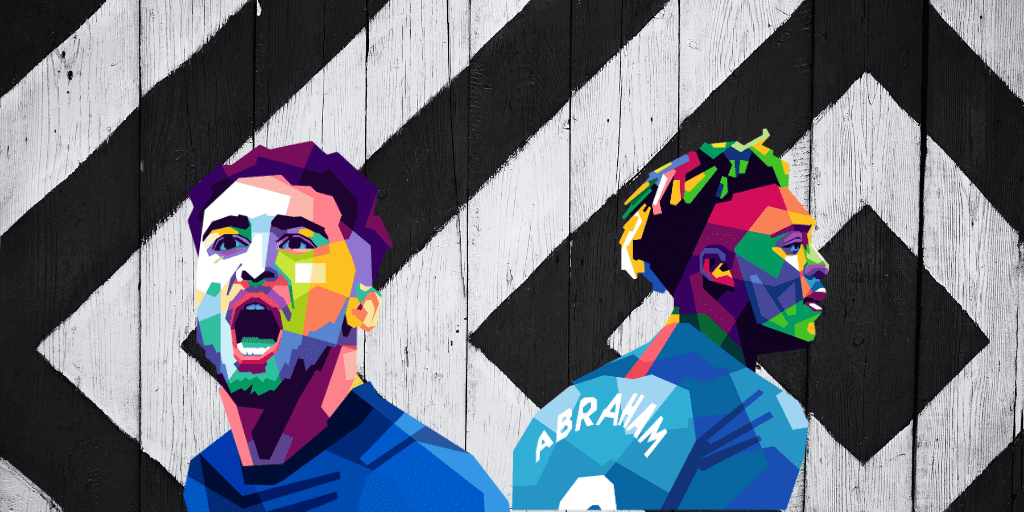



Comments